All AbMole products are for research use only, cannot be used for human consumption.
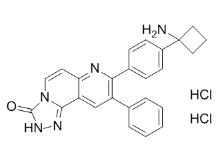
MK-2206 is a novel allosteric inhibitor of Akt with IC50 values of 8 nM, 12 nM and 65 nM for Akt1, Akt2 and Akt3, respectively. An Akt inhibitor may be particularly useful for cancers in which increased Akt signaling is associated with reduced sensitivity to cytotoxic agents or receptor tyrosine kinase inhibitors. In vitro, MK-2206 synergistically inhibited cell proliferation of human cancer cell lines in combination with molecular targeted agents such as erlotinib (an epidermal growth factor receptor inhibitor) or lapatinib (a dual epidermal growth factor receptor/human epidermal growth factor receptor 2 inhibitor). In vivo, MK-2206 in combination with these agents exerted significantly more potent tumor inhibitory activities than each agent in the monotherapy setting.

Cell Chem Biol. 2025 Jun 19;32(6):854-871.e6.
Mechanism by which the molecular glue-like verteporfin induces IRE1α dimerization and activation to synergize with AKT inhibition in breast cancer
MK-2206 2HCl purchased from AbMole

Cell Struct Funct. 2025 Mar 08; .
Macropinocytosis regulates cytokine expression through Erk signaling in LPS-stimulated macrophages
MK-2206 2HCl purchased from AbMole

Cell Rep. 2023 Apr 14;42(4):112378.
AKT activity orchestrates marginal zone B cell development in mice and humans
MK-2206 2HCl purchased from AbMole

Cell Rep. 2023 Jun 27;42(7):112690.
Identification of XAF1 as an endogenous AKT inhibitor
MK-2206 2HCl purchased from AbMole

Front Immunol. 2023 Mar 15;14:1127552.
Giardia duodenalis-induced G0/G1 intestinal epithelial cell cycle arrest and apoptosis involve activation of endoplasmic reticulum stress in vitro
MK-2206 2HCl purchased from AbMole

PLoS Pathog. 2022 Sep 6;18(9):e1010808.
White spot syndrome virus directly activates mTORC1 signaling to facilitate its replication via polymeric immunoglobulin receptor-mediated infection in shrimp
MK-2206 2HCl purchased from AbMole

Sci Rep. 2022 Jul 6;12(1):11444.
PD-L1 regulates cell proliferation and apoptosis in acute myeloid leukemia by activating PI3K-AKT signaling pathway
MK-2206 2HCl purchased from AbMole

Anticancer Res. 2022 Jul;42(7):3325-3340.
PI3K/Akt and Wnt/β-catenin Signaling Cross-regulate NF-κB Signaling in TNF-α-induced Human Lgr5+ Intestinal Stem Cells
MK-2206 2HCl purchased from AbMole

Cells. 2021 Feb 18;10(2):430.
Knockdown of AKT3 Activates HER2 and DDR Kinases in Bone-Seeking Breast Cancer Cells, Promotes Metastasis In Vivo and Attenuates the TGFβ/CTGF Axis
MK-2206 2HCl purchased from AbMole

BMC Biol. 2021 May 20;19(1):108.
Very long intergenic non-coding (vlinc) RNAs directly regulate multiple genes in cis and trans
MK-2206 2HCl purchased from AbMole

Biochem Biophys Res Commun. 2021 Sep 10;569:1-9.
Rapid tumor recurrence in a novel murine GBM surgical model is associated with Akt/PD-L1/vimentin signaling
MK-2206 2HCl purchased from AbMole

Anticancer Res. 2021 May;41(5):2257-2275.
Combined Targeting of AKT and mTOR Synergistically Inhibits Formation of Primary Colorectal Carcinoma Tumouroids In Vitro: A 3D Tumour Model for Pre-therapeutic Dгυg Screening
MK-2206 2HCl purchased from AbMole

Cell Biol Int. 2020 Mar 17.
Fluid Shear Stress Induces Runx-2 Expression via Upregulation of PIEZO1 in MC3T3-E1 Cells
MK-2206 2HCl purchased from AbMole

Cell. 2019 Mar 7;176(6):1379-1392.e14.
Lateral Inhibition in Cell Specification Mediated by Mechanical Signals Modulating TAZ Activity.
MK-2206 2HCl purchased from AbMole

ACS Nano. 2019 Aug 27;13(8):8597-8608.
Gadofullerene Nanoparticles Reverse Dysfunctions of Pancreas and Improve Hepatic Insulin Resistance for Type 2 Diabetes Mellitus Treatment.
MK-2206 2HCl purchased from AbMole

Mol Med Rep. 2019 May;19(5):3519-3526.
Overexpression of ribonuclease inhibitor induces autophagy in human colorectal cancer cells via the Akt/mTOR/ULK1 pathway.
MK-2206 2HCl purchased from AbMole
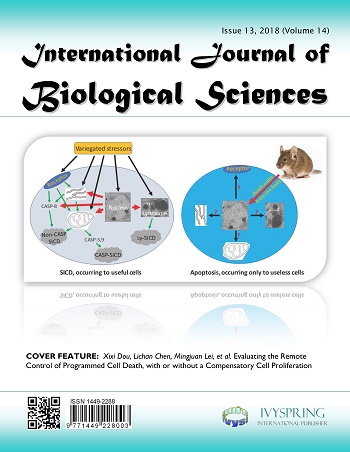
Int J Biol Sci. 2018 Oct 3;14(13):1769-1781.
Inhibition of AKT suppresses the initiation and progression of BRCA1-associated mammary tumors.
MK-2206 2HCl purchased from AbMole
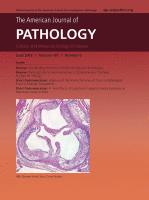
Am J Pathol. 2017 Jun;187(6):1301-1312.
Tight Junction Proteins Claudin-1 and Occludin Are Important for Cutaneous Wound Healing
MK-2206 2HCl purchased from AbMole
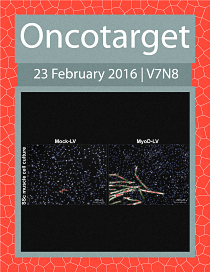
Oncotarget. 2016 Feb 22.
Mechanosensitive caveolin-1 activation-induced PI3K/Akt/mTOR signaling pathway promotes breast cancer motility, invadopodia formation and metastasis in vivo.
MK-2206 2HCl purchased from AbMole
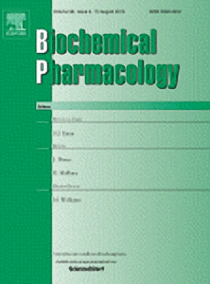
Biochem Pharmacol. 2015 Aug 15;323-36.
Arctigenin exerts anti-colitis efficacy through inhibiting the differentiation of Th1 and Th17 cells via an mTORC1-dependent pathway.
MK-2206 2HCl purchased from AbMole
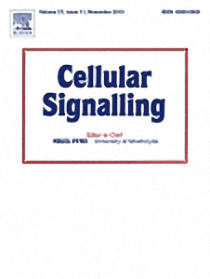
Cell Signal. 2015 Nov;2191-200.
Discontinuing MEK inhibitors in tumor cells with an acquired resistance increases migration and invasion.
MK-2206 2HCl purchased from AbMole
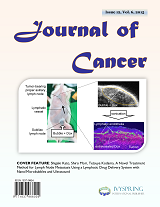
J Cancer. 2015 Sep 16;1195-205.
Vertical Targeting of AKT and mTOR as Well as Dual Targeting of AKT and MEK Signaling Is Synergistic in Hepatocellular Carcinoma.
MK-2206 2HCl purchased from AbMole

2015 Apr.
THE MECHANOBIOLOGICAL MECHANISMS OF CAVEOLAE/CAVEOLIN-1 IN LOW SHEAR STRESS-INDUCED BREAST CARCINOMA CELL MIGRATION AND INVASION
MK-2206 2HCl purchased from AbMole
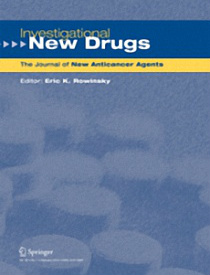
Invest New Drugs. 2014 Dec;32(6):1144-54.
Dual Inhibition of PI3K-AKT-mTOR- and RAF-MEK-ERK-signaling is synergistic in cholangiocarcinoma and reverses acquired resistance to MEK-inhibitors.
MK-2206 2HCl purchased from AbMole
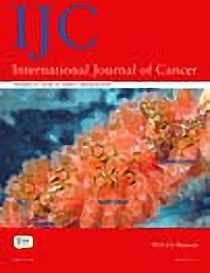
Int J Cancer. 2013 Nov;133(9):2065-76.
Combined targeting of AKT and mTOR using MK-2206 and RAD001 is synergistic in the treatment of cholangiocarcinoma.
MK-2206 2HCl purchased from AbMole
| Cell Experiment | |
|---|---|
| Cell lines | CNE-1,CNE-2,HONE-1,SUNE-1 |
| Preparation method | MK-2206 is dissolved in DMSO as a stock solution and diluted by culture media before use. Cells are seeded at an appropriate density per well in 96-well plates and incubated for 24 hours. Then MK-2206 (0~10μM) is added to the cells. Cell proliferation is determined after 72 or 96 hours. |
| Concentrations | 0,0.08,0.16,0.31,0.63,1.25,2.5,5,10μM |
| Incubation time | 72 or 96 hours |
| Animal Experiment | |
|---|---|
| Animal models | CNE-2 model in male BALB/c nude mice |
| Formulation | Formulated in 30% Captisol |
| Dosages | MK-2206 (240 mg/kg, three times a week), MK-2206 (480 mg/kg, once a week), and 30% Captisol (Cydex) diluents |
| Administration | Oral gavage for 2 weeks |
| Molecular Weight | 480.39 |
| Formula | C25H21N5O.2HCl |
| CAS Number | 1032350-13-2 |
| Solubility (25°C) | DMSO 12 mg/mL |
| Storage |
Powder -20°C 3 years ; 4°C 2 years In solvent -80°C 6 months ; -20°C 1 month |
[2] Sangai et al. Clin Cancer Res. Biomarkers of Response to Akt Inhibitor MK-2206 in Breast Cancer.
| Related Akt Products |
|---|
| ZINC00784494
ZINC00784494 is a specific Lipocalin-2 (LCN2) inhibitor. ZINC00784494 inhibits cell proliferation, cell viability and reduces AKT phosphorylation levels in SUM149 cells. |
| (E)-Akt inhibitor-IV
(E)-Akt inhibitor-IV is a PI3K-Akt inhibitor, with potent cytotoxic. |
| K-80003
K-80003 is a potent inhibitor of tRXRα-dependent Akt activation and cancer cell growth. |
| FPA-124
FPA-124, a cell-permeable copper complex, is a selective Akt inhibitor with an IC50 of 0.1 μM. |
| SPOP-IN-1
SPOP-IN-1 is a selective SPOP E3 ubiquitin ligase inhibitor. |
All AbMole products are for research use only, cannot be used for human consumption or veterinary use. We do not provide products or services to individuals. Please comply with the intended use and do not use AbMole products for any other purpose.


Products are for research use only. Not for human use. We do not sell to patients.
© Copyright 2010-2024 AbMole BioScience. All Rights Reserved.
